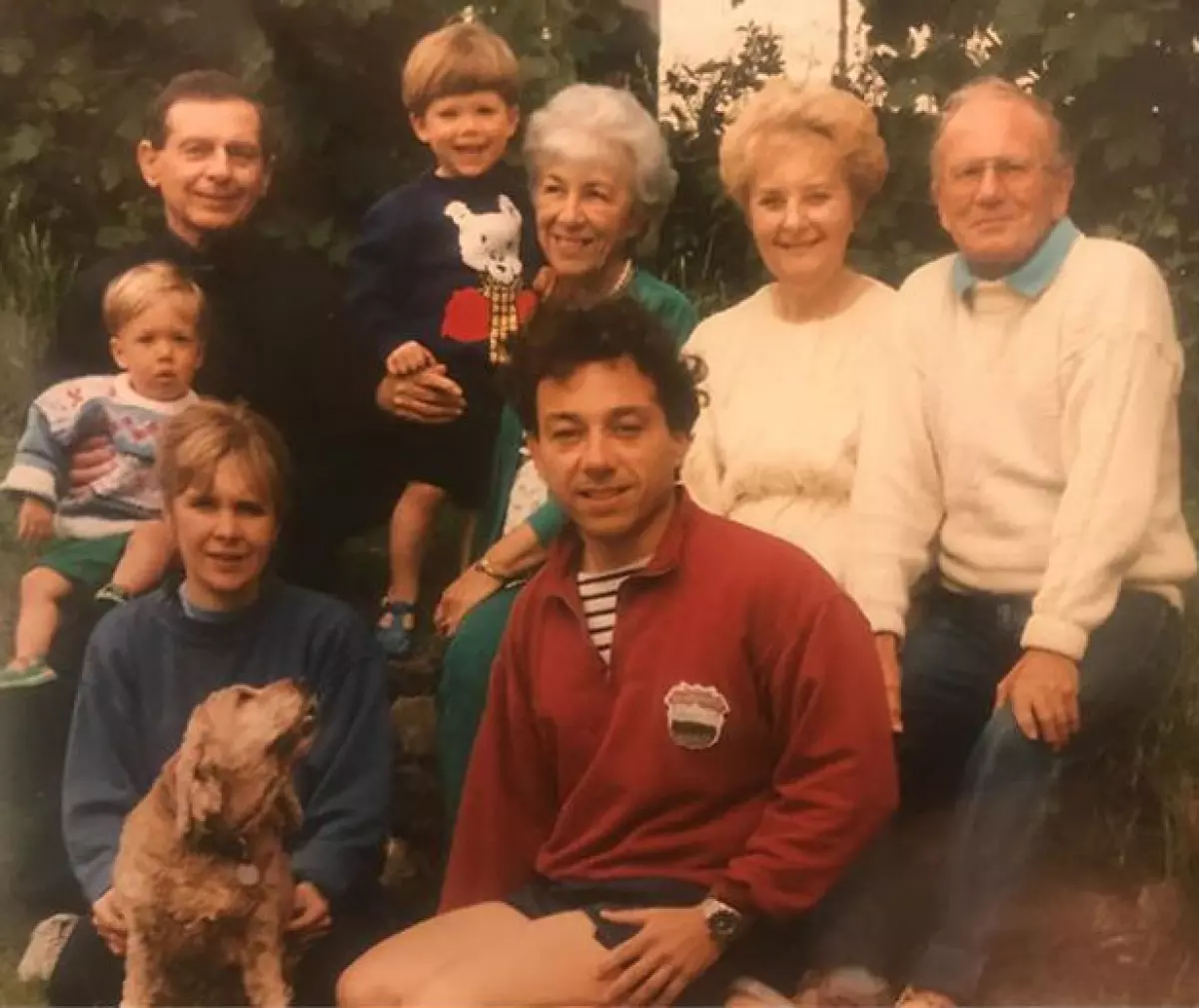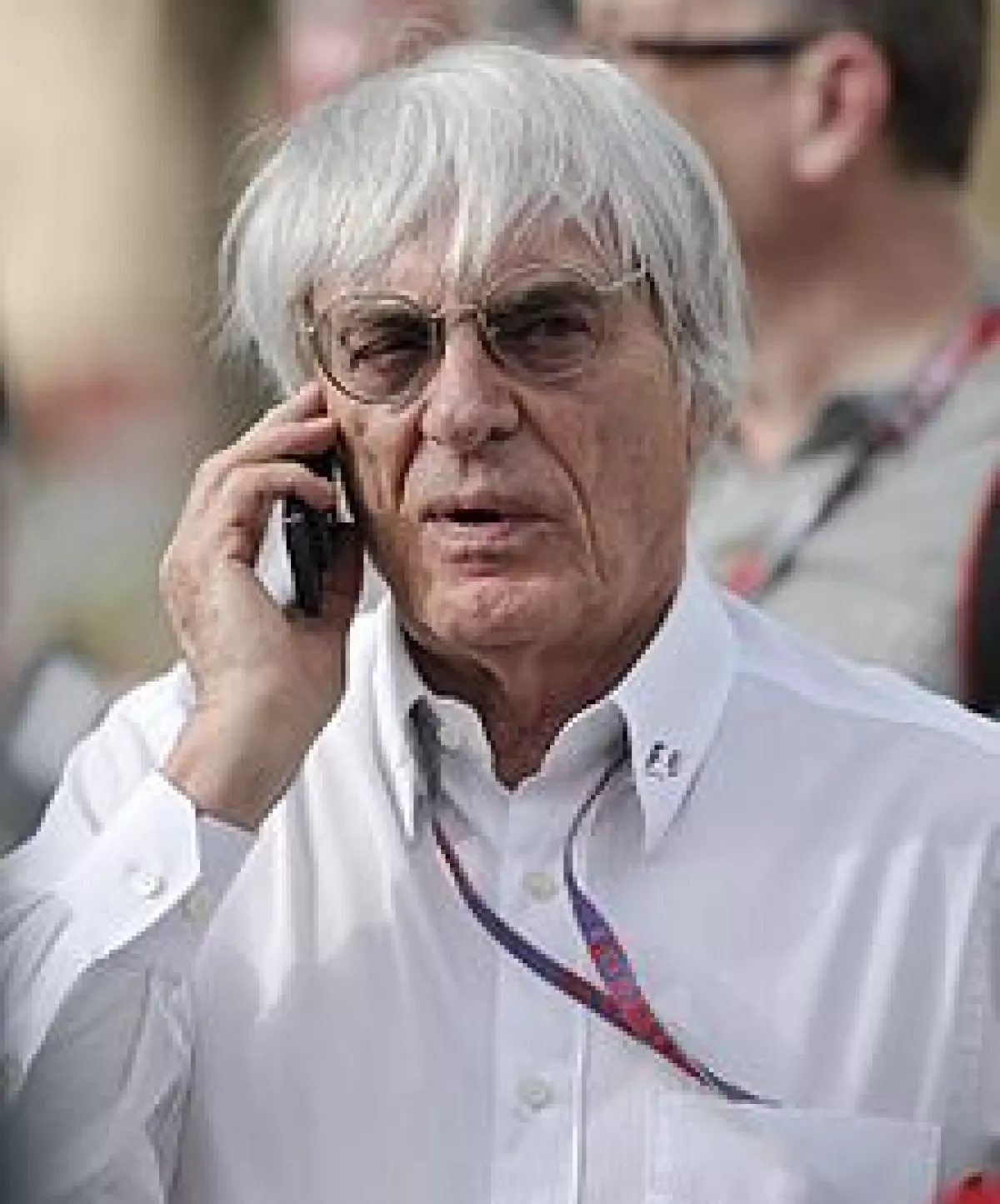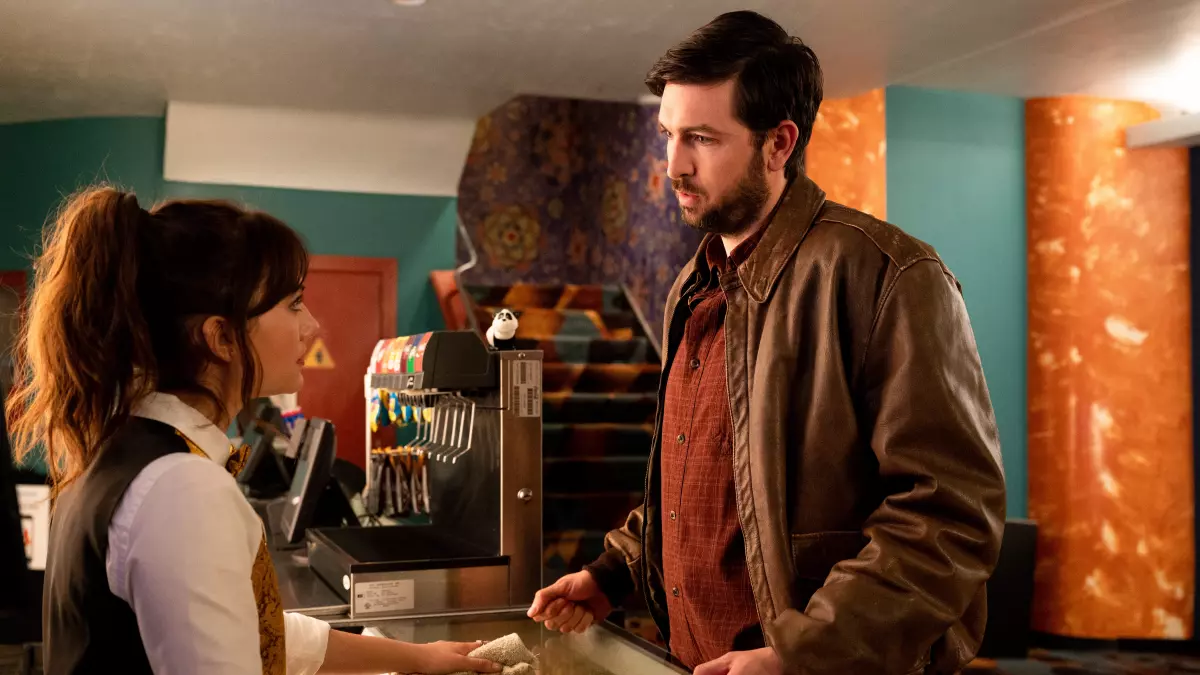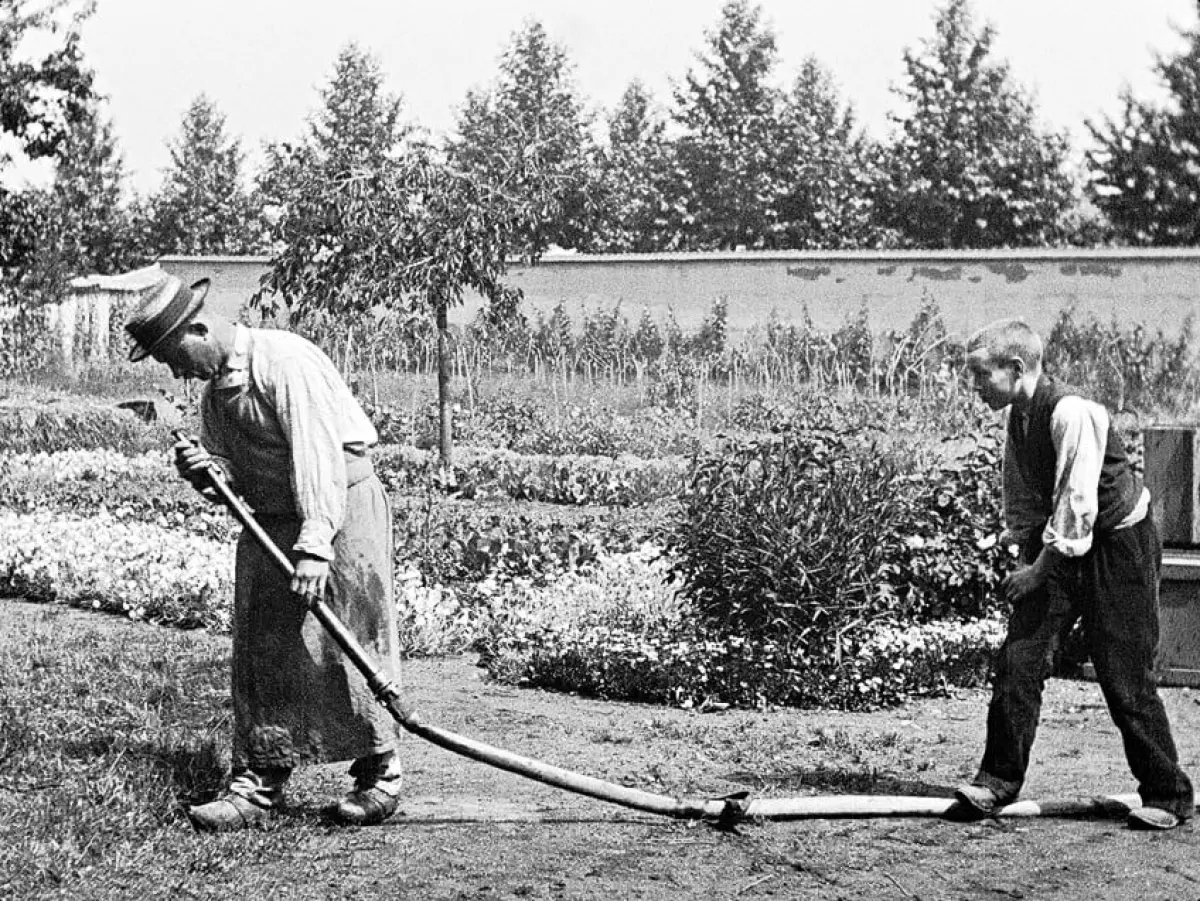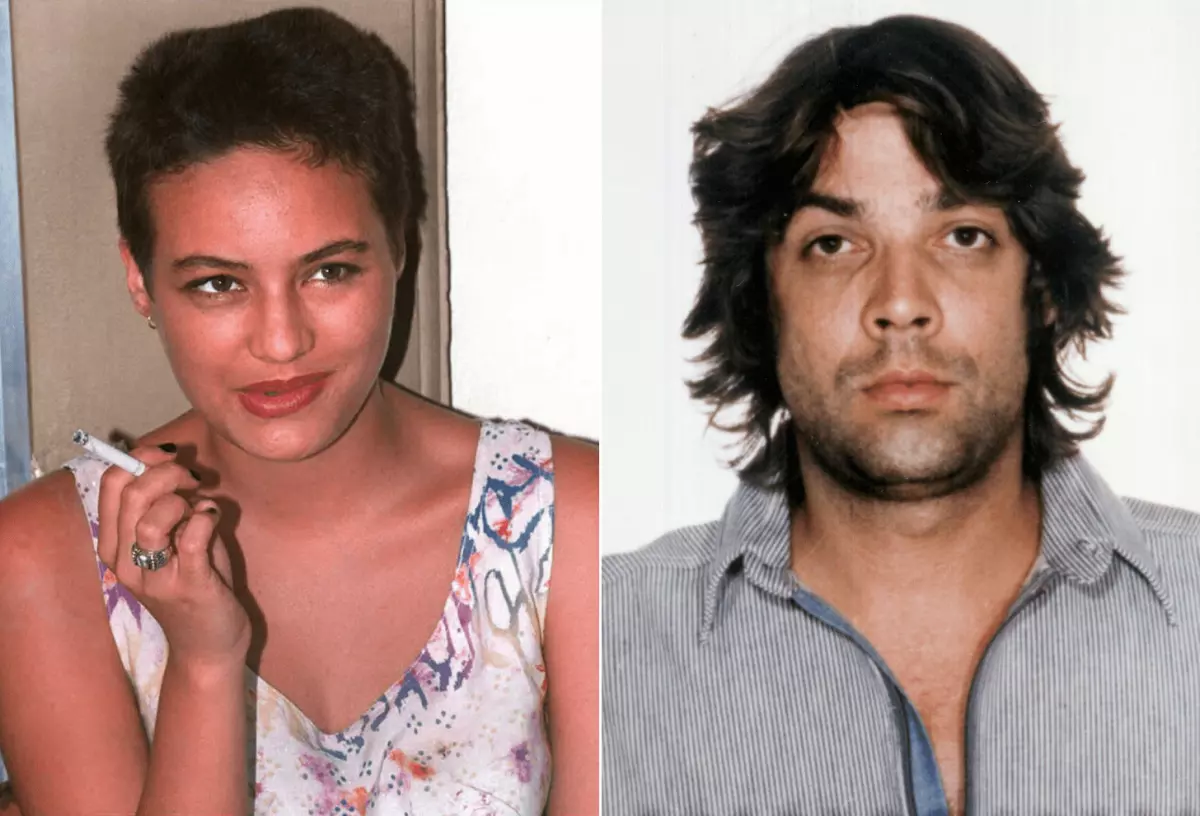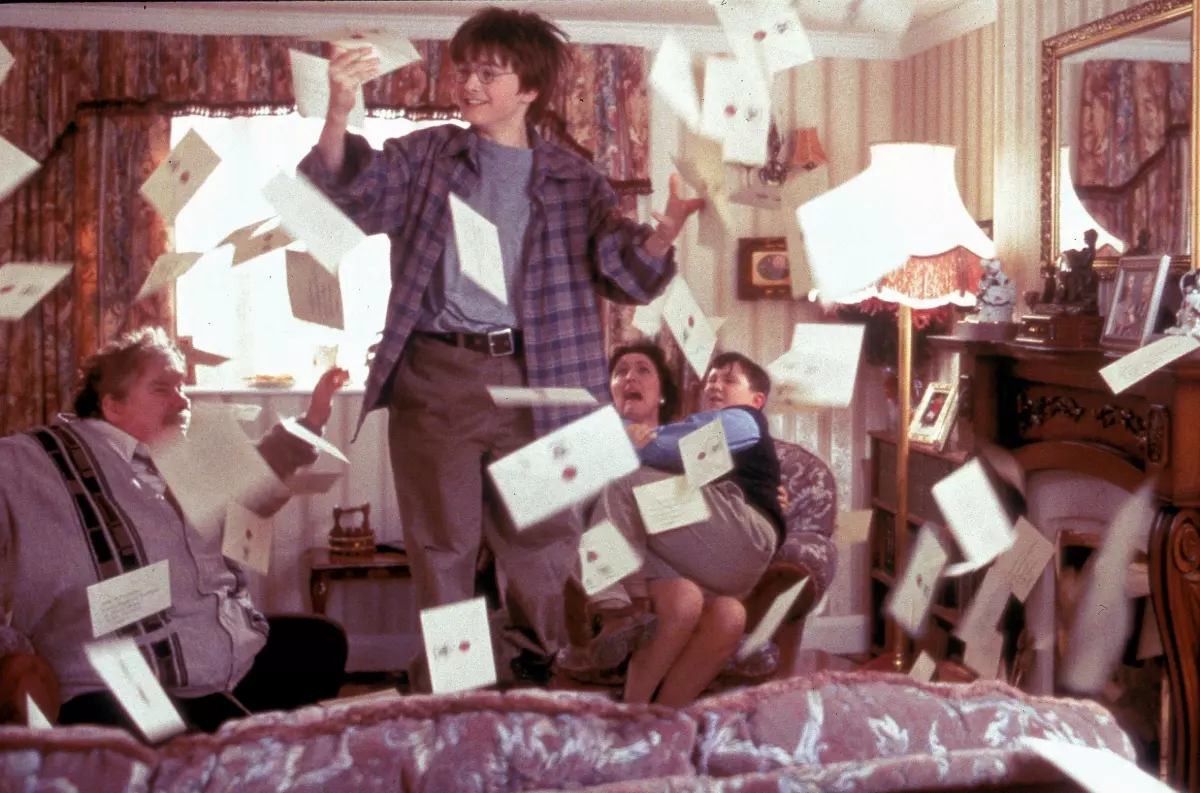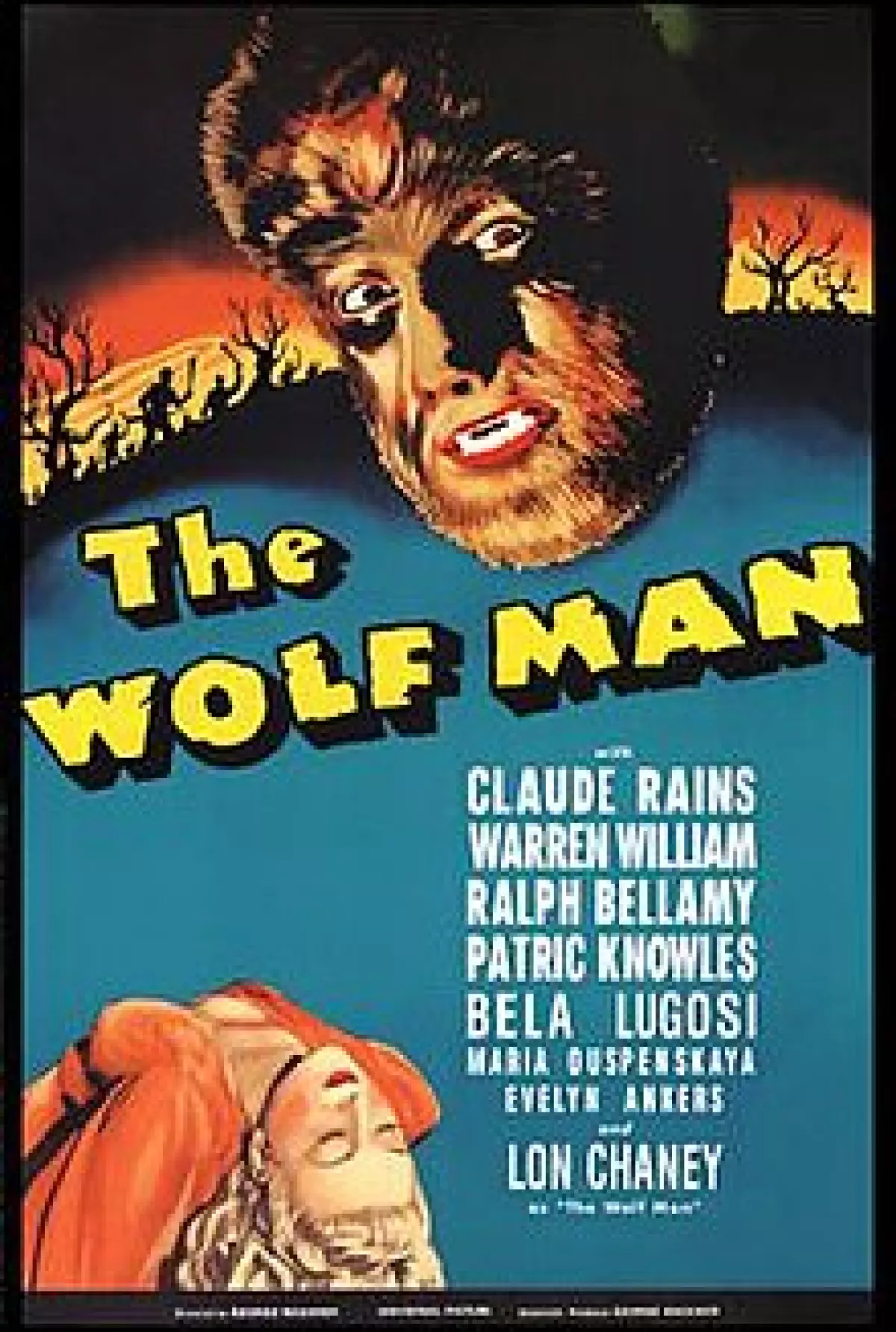 Promotional image featuring Evelyn Ankers and Lon Chaney Jr.
Promotional image featuring Evelyn Ankers and Lon Chaney Jr.
The Wolf Man, a gothic horror film released in 1941, continues to captivate audiences with its timeless story of transformation and terror. Directed by George Waggner and written by Curt Siodmak, this American classic stars Lon Chaney Jr. in the iconic title role. With its talented cast, atmospheric cinematography, and haunting music, The Wolf Man has left an indelible mark on Hollywood's depiction of the werewolf legend.
A Tale of Love, Mystery, and the Supernatural
The film follows the story of Larry Talbot, who returns to his ancestral home in Wales after the death of his brother. As he reconnects with his estranged father and falls in love with a local girl named Gwen Conliffe, Larry discovers the dark secret that plagues his family. A silver wolf's head walking stick and the legend of the werewolf haunt his every step. As the full moon rises, Larry becomes entangled in a series of events that lead to tragedy and transformation.
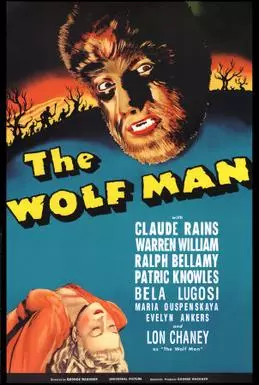 Publicity photo of Chaney in full makeup.
Publicity photo of Chaney in full makeup.
Exploring Themes and Interpretations
The Wolf Man delves into deeper themes and symbolism, making it more than just a typical horror film. It reflects the fear of uncontrolled aggression and the conflicts between desire and societal norms. The transformation of the werewolf can also be seen as an allegory for the tumultuous experience of puberty, highlighting the dangers of giving in to one's animalistic urges. Additionally, the film resonated with American audiences during World War II, as it subtly addresses the anxieties of the time.
Behind the Scenes: Makeup and Special Effects
One of the most memorable aspects of The Wolf Man is Lon Chaney Jr.'s portrayal of the werewolf. The makeup and transformation scenes, though laborious and time-consuming, were groundbreaking for their time. Chaney spent hours in the makeup chair as the skilled artists meticulously applied layers of makeup and created the iconic look of the Wolf Man. The detailed transformation scenes, featuring the growth of hair and monstrous features, left a lasting impression on audiences.
Enduring Legacy and Remakes
The Wolf Man's impact on popular culture is undeniable. Chaney's portrayal of the tormented Larry Talbot became synonymous with the character, and he reprised the role in four subsequent Universal films. The film's success led to a series of sequels and spin-offs, as well as a 2010 remake starring Benicio del Toro. While the remake received mixed reviews, it won an Academy Award for Best Makeup, reaffirming the enduring appeal of the original film.
As Universal Pictures continues to explore its iconic monsters, a new reboot of The Wolf Man is in the works. Ryan Gosling has been cast in the titular role, and the film promises to offer a fresh take on the classic tale. With the talent involved and the continued fascination with werewolf lore, fans eagerly await this new chapter in The Wolf Man's legacy.
The Wolf Man remains a timeless classic that continues to captivate audiences with its compelling story, memorable characters, and atmospheric setting. Its influence on the horror genre and its enduring popularity speak to the power of storytelling and the lasting impact of a well-crafted film.
Note: Repetitive information has been omitted for brevity.







